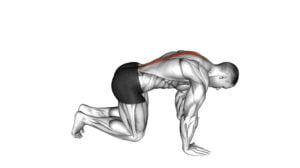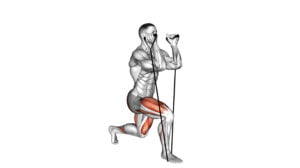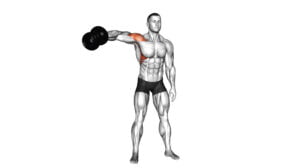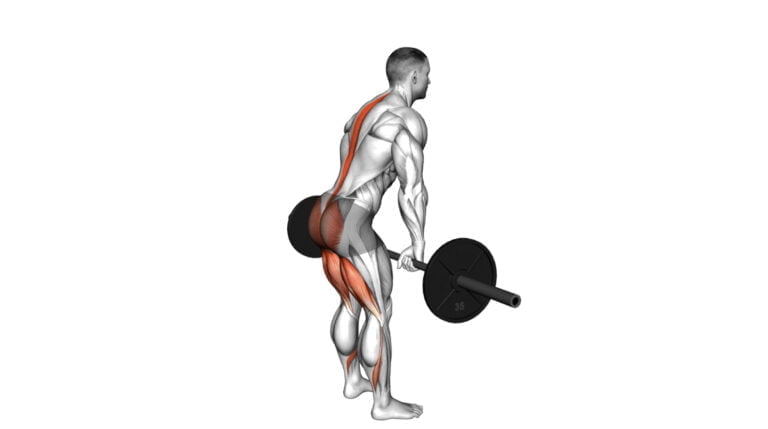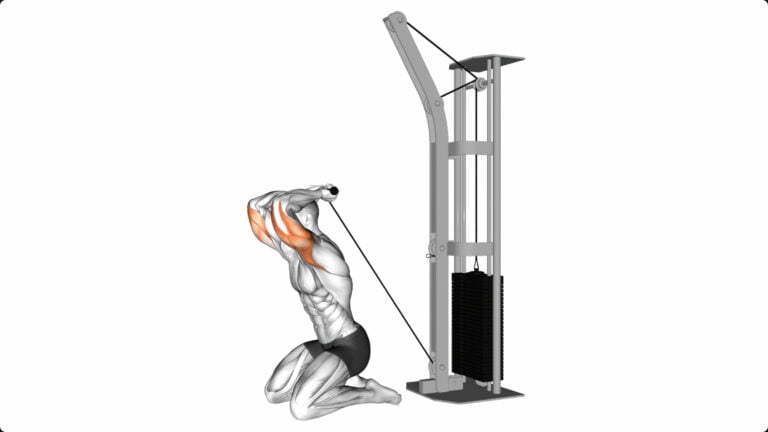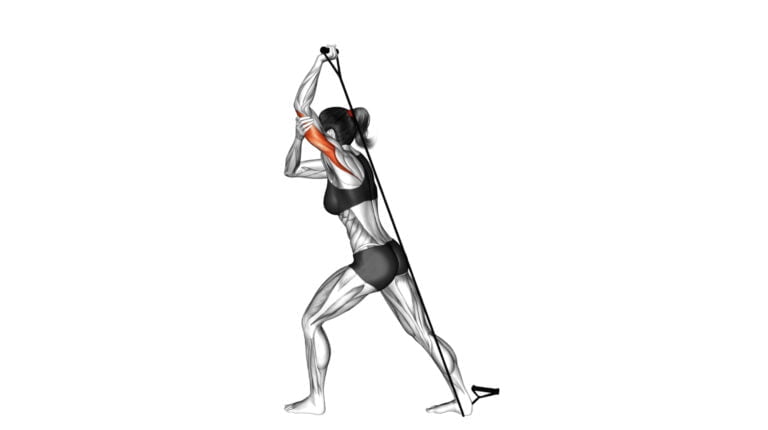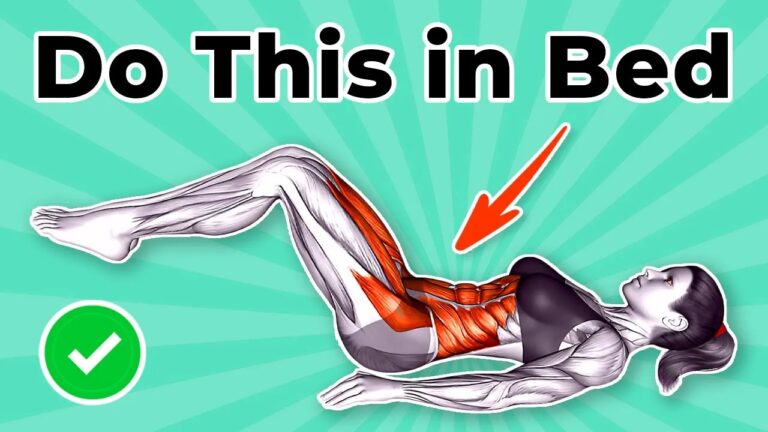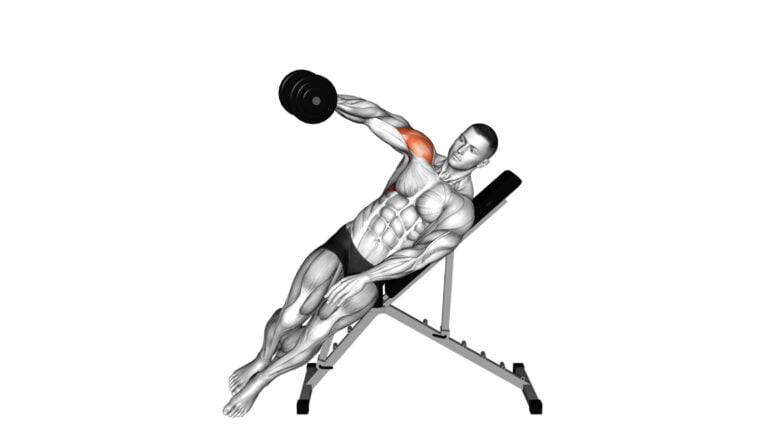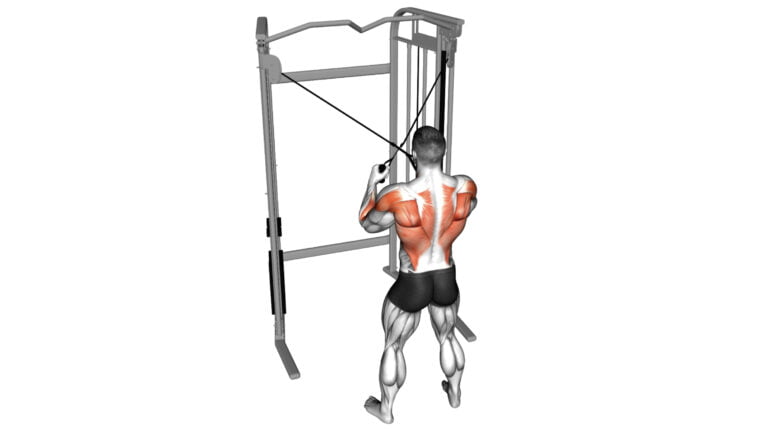10 Exercises for Erector Spinae You Need to Try Now!
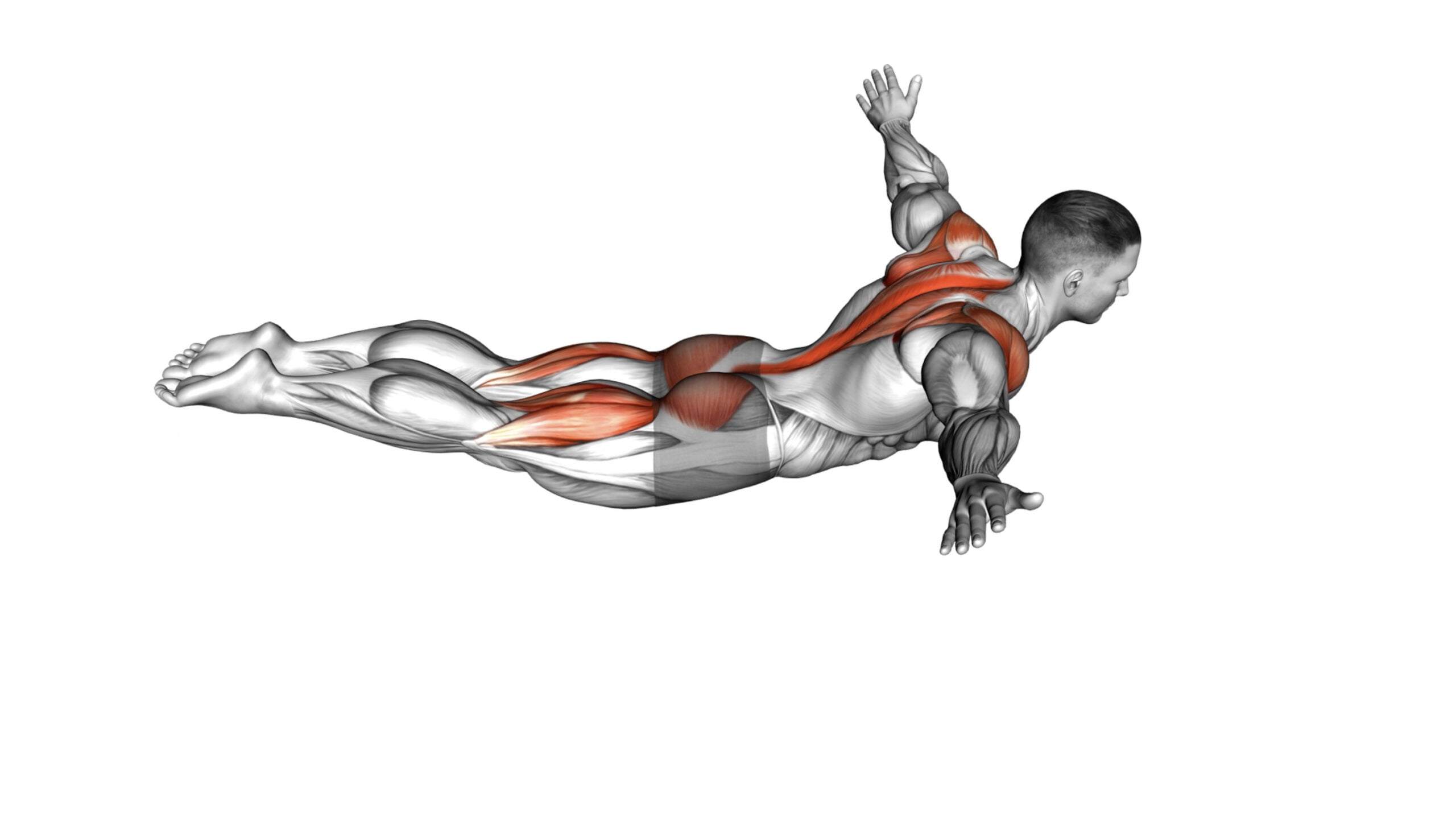
The journey to a stronger back starts with understanding and strengthening the erector spinae muscles. As a certified personal trainer with over a decade of experience in helping individuals reach their fitness goals, I’ve seen firsthand how targeting these crucial muscles can transform your overall health and physical performance.
The erector spinae are not just any muscle group; they are pivotal for maintaining good posture, ensuring spinal stability, and enabling core strength that supports virtually every movement your body makes.
Many people neglect their erector spinae until it’s too late, leading to poor posture and potential injuries. However, this article dives deep into 10 effective exercises for erector spinae that are designed to fortify your back like never before.
With these workouts in your arsenal, you’ll not only look better but feel stronger and more resilient against everyday stresses on your spine. An important fact to remember is that the erector spinae muscles run along your spine from the lower back up to the base of the skull which means their well-being is fundamental for both minor movements and heavy lifting activities alike.

Keep reading; transforming your back starts now!
Key Takeaways
- Strengthening your erector spinae muscles improves posture, making you stand taller and with more confidence. Exercises like deadlifts, squats, and supermans directly target these back muscles to help maintain the spine’s natural curve.
- Focusing on erector spinae strength helps reduce the risk of back injuries. By engaging in specific exercises, you build a natural brace for your spine that protects against strains or sprains during both high-impact activities and everyday tasks.
- The top 10 effective exercises for strengthening the erector spinae include Alternating Superman, Around the World Superman Hold, Alternate Sprinter Lunge, Bent Knee Back to Side Kick, Bodyweight Good Morning Row, Bodyweight Single Leg Deadlift, Bodyweight Standing Romanian Deadlift, Bridge Walks, Floor T Raise and Front Plank with Arm and Leg Lift.
- Maintaining proper form is key when performing these exercises. Keeping your back straight and shoulders pulled back ensures maximum engagement of the erector spinae muscles while preventing potential injuries due to improper technique.
- Regularly incorporating these targeted exercises into your workout routine not only fortifies your lower back but also enhances overall well-being by supporting better posture and reducing injury risks.
What are the Erector Spinae Muscles?
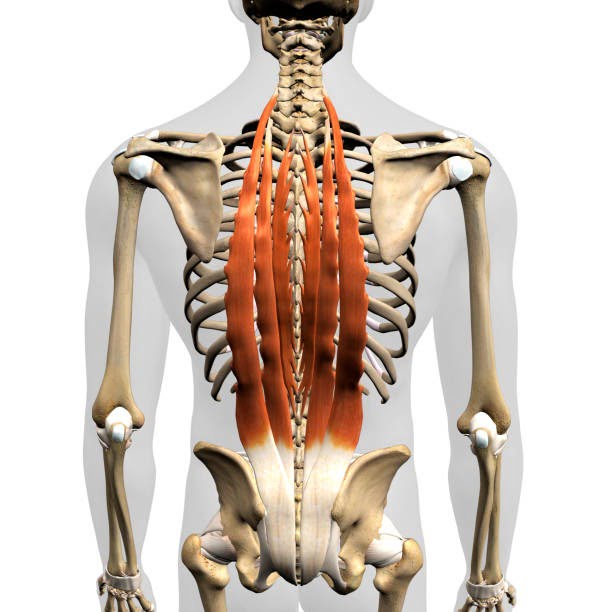
Moving from the introduction of strengthening your back, let’s dive into understanding what forms its core support. Erector spinae muscles run along your spine from the lower back to the neck.
They consist of three major muscle groups: iliocostalis, longissimus, and spinalis. These muscles play a vital role in maintaining upright posture and are involved in movements such as bending sideways or twisting at the waist.
Engaging these muscles correctly through exercises for erector spinae can dramatically improve stability and strength in your back. Whether you’re lifting weights, deadlifting, or simply standing up straight, these muscles work tirelessly to keep you balanced and upright.
Their health is crucial not just for athletes but for anyone looking to maintain a strong and pain-free back throughout their daily activities.
Why Should You Strengthen Your Erector Spinae Muscles?

Strengthening your erector spinae muscles is essential for maintaining an upright posture and reducing the risk of back injuries. Improved posture not only enhances your physical appearance but also supports spinal alignment, contributing to overall well-being.
Improved posture
Strengthening your erector spinae muscles plays a crucial role in improving your posture. A strong back ensures that you can stand tall and maintain proper alignment of your shoulders, hips, and knees.
This alignment is essential not only for looking confident but also for relieving pressure on your lower back. Exercises like deadlifts, squats, and supermans directly target these muscles, helping to correct any slouching tendencies by reinforcing the spine’s natural curve.
Having an upright posture does more than just boost confidence; it also enhances breathing and improves overall body function. As the spinal erectors become stronger through targeted exercise, they support the thoracic region better, allowing for deeper breaths and improved oxygen flow throughout the body.
Regularly engaging in strength training that focuses on these key muscle groups will lead to significant improvements in how you carry yourself every day.
Reduced risk of injury
Building on the foundation of improved posture, focusing on erector spinae strength directly contributes to a reduced risk of injury. By engaging in targeted exercises, you fortify these muscles along your spine, which act as a natural brace during physical activity.
This support is crucial not just for weightlifting and high-impact sports but also for daily tasks that might strain the lower back.
Stronger erector spinae muscles mean better stability across your core and lower back, making you less prone to common injuries like strains or sprains. These benefits extend beyond the gym; they protect your back during bending, lifting, and even sitting.
Regularly strengthening these muscles with specific exercises ensures they can effectively support your spine under stress, keeping you safe and healthy in both fitness pursuits and everyday life.
Top 10 Effective Exercises For Erector Spinae
Strengthen your erector spinae muscles with these effective exercises. They will help improve posture and reduce the risk of injury.
1. Alternating Superman
Begin by lying on your stomach, with arms extended overhead and legs straight. Lift your right arm and left leg off the ground simultaneously while keeping your core engaged. Hold for a few seconds before lowering them back down and then switch to lift your left arm and right leg instead.
This exercise targets the erector spinae muscles in the lower back, promoting strength and stability.
As you perform this movement, focus on breathing steadily and maintaining control throughout each repetition. Aim for a smooth transition between alternating sides to maximize its effectiveness.
2. Around the World Superman Hold
Engage your erector spinae muscles with the Around the World Superman Hold. Lie face down, extend arms overhead, and lift both upper body and legs off the ground simultaneously. As you hold this position, rotate your arms out to the sides in a circular motion, feeling the burn in your lower back.
This exercise targets your erector spinae while also engaging your shoulder and back muscles for a comprehensive strengthening workout.
Maintain proper form throughout by keeping your neck aligned with your spine and focusing on controlled movements. Incorporate this dynamic exercise into your routine to build endurance in your erector spinae while enhancing overall spinal stability and strength.
3. Alternate Sprinter Lunge
The Alternate Sprinter Lunge is an effective exercise that targets the erector spinae muscles along with the glutes, hamstrings, and quadriceps. Start by standing straight with your feet hip-width apart.
Then, lunge backward with your left foot while simultaneously bending both knees to create a 90-degree angle. Your right knee should align with your right ankle. Push through the heel of your right foot to return to starting position and then repeat on the other side.
Performing this exercise not only strengthens the erector spinae but also improves lower body strength and overall stability. It’s an excellent addition to any workout routine aiming for stronger back muscles and enhanced lower body power.
4. Bent Knee Back to Side Kick
Bend your knees and position yourself on all fours. Then, lift one leg out to the side while keeping it bent at a 90-degree angle. Hold this position for a moment before returning to the starting position.
This exercise targets your erector spinae muscles, helping to improve their strength and stability.
Encourage engagement of the erector spinae muscles by maintaining proper form throughout this movement. Remember not to rush through the exercise, focus on controlled movements with deliberate muscle engagement to maximize its effectiveness.
5. Bodyweight Good Morning Row
The bodyweight good morning row is an effective exercise that targets the erector spinae muscles. Start by standing with feet hip-width apart and bending at the hips while keeping a slight bend in the knees.
With hands behind your head, hinge forward from the hips until your torso is almost parallel to the floor. Engage your back muscles as you pull your elbows back and squeeze your shoulder blades together.
Lower your arms back down to complete one rep.
6. Bodyweight Single Leg Deadlift
Engage your erector spinae and improve balance with the bodyweight single leg deadlift. Stand on one leg, keeping a slight bend in the knee for stability. Hinge forward from your hips while extending the opposite leg behind you, maintaining a straight line from head to heel.
Return to standing position using the strength of your glutes and lower back. This exercise targets multiple muscle groups simultaneously, enhancing functional strength.
Evoke a mind-muscle connection and achieve optimal results by focusing on controlled movements throughout each repetition. Coordinate breathing to enhance stability and core engagement during this challenging unilateral exercise designed to fortify your erector spinae muscles for improved posture and reduced injury risk.
7. Bodyweight Standing Romanian Deadlift
Transitioning from the single-leg deadlift, the bodyweight standing Romanian deadlift is another effective exercise for targeting the erector spinae muscles. This exercise helps to enhance strength and stability in the lower back, glutes, and hamstrings while also improving balance and coordination.
To perform this exercise, stand with your feet hip-width apart and knees slightly bent. Hold your hands together in front of you or place them on your hips. Hinge at your hips, keeping your back straight as you lower your torso toward the ground while lifting one leg straight behind you.
Engage your core as you return to a standing position. Repeat on both sides for a balanced workout targeting the erector spinae muscles along with other muscle groups mentioned earlier.
8. Bridge Walk
The Bridge Walk is an effective exercise that targets the erector spinae muscles, as well as the glutes and hamstrings. To perform this exercise, lie on your back with your knees bent and feet flat on the floor.
Lift your hips off the ground until your body forms a straight line from shoulders to knees. Then, take small steps forward by alternating lifting each foot, maintaining the bridge position throughout.
Contracting the erector spinae muscles helps stabilize and support the spine while walking in this elevated position. This exercise also engages the glutes and hamstrings to promote overall lower back strength and stability.
9. Floor T Raise
After completing the Bridge Walk, a great exercise to target the erector spinae muscles is the Floor T Raise. Lie facedown on the floor with your arms extended straight out from your shoulders to form a “T” shape.
With your palms facing down, engage your core and lift your chest and legs off the ground simultaneously. Hold this position for a few seconds, then lower back down to complete one repetition.
This exercise effectively engages the erector spinae as well as other muscles in the back, helping to improve overall strength and stability in the posterior chain. The Floor T Raise can be performed using bodyweight only or by adding resistance with light dumbbells for an added challenge.
10. Front Plank with Arm and Leg Lift (push-up position)
Transitioning from the Floor T Raise, the Front Plank with Arm and Leg Lift is an effective exercise for strengthening the erector spinae muscles. Begin in a plank position, keeping your body in a straight line from head to heels.
Elevate one arm and the opposite leg simultaneously while maintaining balance and stability. This exercise engages your erector spinae, as well as your core muscles, offering a comprehensive strengthening workout.
Maintain proper form throughout by engaging your abdominal muscles to stabilize your body. Perform controlled movements to avoid overstretching or straining the lower back, ensuring that each lift is executed with deliberate muscle engagement.
Recommended Sets And Reps
For the alternating Superman exercise, aim for 3 sets of 10-12 reps. The around the world superman hold can be performed for 2 sets of 30 seconds each. Try doing 3 sets of alternate sprinter lunges with 8-10 reps per leg and gradually increase as you progress.
Bent knee back to side kick can be done in 2 sets of 12 reps per leg, while the bodyweight good morning row is effective at 3 sets of 10-12 reps.
Bodyweight single-leg deadlifts are beneficial when done for 3 sets of 8-10 reps on each leg, and standing Romanian deadlifts can be incorporated with a weight that allows you to complete three sets with around ten repetitions.
Tips for Incorporating Exercises For Erector Spinae into Your Training Routine

Ensure proper form and technique are maintained during the exercises to effectively target the erector spinae muscles. Gradually progress in intensity and difficulty to continually challenge and strengthen these muscles.
Allow adequate rest and recovery between sessions to support muscle growth and avoid overtraining.
Proper form and technique
Maintaining proper form and technique is crucial when performing exercises for the erector spinae muscles. Ensure that your back remains straight, with the shoulders pulled back and down to engage the muscles effectively.
Keep a neutral spine position throughout each exercise to minimize strain on the lower back.
Engage your core muscles to support your spine during movements, preventing excessive arching or rounding of the back. Focus on controlled and deliberate movements, avoiding any jerky or sudden motions that could lead to injury.

Gradual progression
As you start incorporating exercises for your erector spinae muscles, it’s essential to focus on gradual progression. Begin with lighter resistance and fewer sets and reps to allow your body to adapt and build strength over time.
By gradually increasing the intensity, duration, or complexity of your exercises, you can minimize the risk of injury while effectively strengthening your erector spinae muscles.
It’s important to listen to your body and pay attention to any signs of discomfort or strain as you progress. Gradual progression allows you to challenge yourself in a sustainable manner and achieve long-term improvements in muscle strength and endurance.
Moving forward, let’s explore valuable tips for incorporating these exercises into your training routine that will help ensure proper form, prevent injuries, optimize rest and recovery between sessions while maintaining consistent progress towards a stronger back.
Rest and recovery
To maximize the benefits of these exercises, rest and recovery are crucial. After each session, allow your erector spinae muscles time to repair and grow stronger. Adequate rest will prevent overuse injuries and ensure that you’re fully prepared for your next workout routine.
Ensuring ample sleep is essential for muscle recovery, as it enables the body to repair damaged tissues and regulate hormones that aid in muscle growth. Additionally, incorporating stretching or yoga into your routine can help increase blood flow to the muscles, promoting faster recovery after intense workouts.
Consistently practicing good nutrition by consuming sufficient protein and hydration supports muscle repair and overall recovery. By prioritizing rest and recovery alongside these exercises for your erector spinae muscles, you can achieve long-term strength gains while minimizing the risk of injury.
Conclusion

Take charge of your fitness journey by incorporating these top 10 effective exercises to strengthen your erector spinae muscles. By practicing proper form and technique, you can gradually progress and achieve better posture while reducing the risk of injury.
These compound exercises, such as the Around the World Superman Hold and Bridge Walk, offer practical benefits that contribute to improved strength and resilience in your lower back.
Embrace these strategies for a more functional physique and experience the impact they bring to your daily life. Keep striving for better health with confidence, knowing that you are taking proactive steps towards a stronger and healthier body.
FAQs
1. What are the best exercises to strengthen my erector spinae muscles?
The most effective exercises for strengthening your erector spinae muscles include conventional deadlifts, back squats, hyperextensions, and kettlebell swings. These moves target your lower back directly and promote strength.
2. Can isolation exercises help improve my lower back health?
Yes, isolation exercises like hyperextensions focus specifically on the erector spinae muscles. These types of workouts can significantly reduce lower back pain by targeting and strengthening these core muscle groups.
3. How do compound exercises benefit my erector spinae muscles?
Compound exercises such as the conventional deadlift and back squat work multiple muscle groups at once, including your erectorespinalisging. They not only enhance strength but also ensure balanced development across different body parts, supporting overall spine health.
4. Why is it important to include both free weights and calisthenics in my routine?
Incorporating both free weights like barbells or kettlebells and calisthenics movements such as pull-ups ensures a comprehensive workout regimen that promotes hypertrophy in all muscle fibers, including those slow-twitch fibers crucial for posture and endurance.
5. Are there specific benefits of doing pull-ups for my upper body in relation to strengthening my spine?
Pull-ups are an excellent compound exercise that effectively engages your lats (latissimus dorsi) alongside your entire upper body, helping to support spinal alignment through strengthened musculature surrounding the vertebrae while promoting a strong physique.
6. How often should I perform these exercises for optimal results?
To see significant improvements in erector spinae strength and performance while minimizing risks of injury or overtraining; integrating these recommended exercises into your weekly fitness routine 2-3 times with adequate rest periods between sessions will offer notable benefits towards achieving a stronger back and healthier spine

Author
Years ago, the spark of my life’s passion ignited in my mind the moment I stepped into the local gym for the first time. The inaugural bead of perspiration, the initial endeavor, the very first surge of endorphins, and a sense of pride that washed over me post-workout marked the beginning of my deep-seated interest in strength sports, fitness, and sports nutrition. This very curiosity blossomed rapidly into a profound fascination, propelling me to earn a Master’s degree in Physical Education from the Academy of Physical Education in Krakow, followed by a Sports Manager diploma from the Jagiellonian University. My journey of growth led me to gain more specialized qualifications, such as being a certified personal trainer with a focus on sports dietetics, a lifeguard, and an instructor for wellness and corrective gymnastics. Theoretical knowledge paired seamlessly with practical experience, reinforcing my belief that the transformation of individuals under my guidance was also a reflection of my personal growth. This belief holds true even today. Each day, I strive to push the boundaries and explore new realms. These realms gently elevate me to greater heights. The unique combination of passion for my field and the continuous quest for growth fuels my drive to break new ground.





